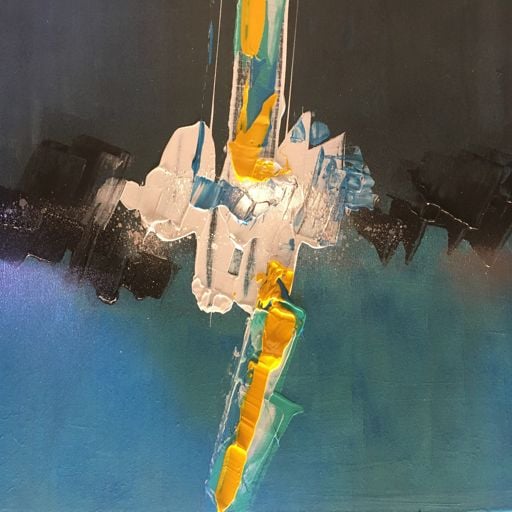The moon rotates once per revolution around the Earth, but that’s not a coincidence. Somehow the rotation and revolution are connected to each other. Some force is keeping them the same. How exactly does that work?
Here’s a good explainer:
What is tidal locking? https://phys.org/news/2015-11-tidal.html
Basically, the moon acted like a spinning (unbalanced) wheel, and eventually stopped with the “heavy” side pointing “down” towards Earth. I.e. think of the moon as orbiting Earth with the heavy side staying pointed at Earth.
Is that also why more ‘interesting’ side, with more features such as lunar maria, is pointed at us? The far side of the moon looks pretty boring compared to the near side. Or is that just a coincidence?
Looks like it’s a common question, and is still under debate!
https://en.m.wikipedia.org/wiki/Lunar_mare
The reason that the mare basalts are predominantly located on the near-side hemisphere of the Moon is still being debated by the scientific community. Based on data obtained from the Lunar Prospector mission, it appears that a large proportion of the Moon’s inventory of heat producing elements (in the form of KREEP) is located within the regions of Oceanus Procellarum and the Imbrium basin, a unique geochemical province now referred to as the Procellarum KREEP Terrane.[10][11][12] While the enhancement in heat production within the Procellarum KREEP Terrane is most certainly related to the longevity and intensity of volcanism found there, the mechanism by which KREEP became concentrated within this region is not agreed upon.[13]
It is commonly suggested that there is some form of link between the synchronous rotation of the Moon about the Earth, and the mare basalts. However, gravitational torques that result in tidal despinning only arise from the moments of inertia of the body (these are directly relatable to the spherical harmonic degree-2 terms of the gravity field), and the mare basalts hardly contribute to this (see also tidal locking). (Hemispheric structures correspond to spherical harmonic degree 1, and do not contribute to the moments of inertia.) Furthermore, tidal despinning is predicted to have occurred quickly (in the order of thousands of years), whereas the majority of mare basalts erupted about one billion years later.
All the large moons in the solar system are tidally locked to their planet!
Pluto and Charon are tidally locked to each other!
The earth would eventually be tidally locked to the moon too, but because it’s happening so slowly, it wouldn’t happen before the sun turns into a red giant and engulf both!
There is such a huge difference in the masses of the earth and moon that although the moon is slowing the rotation of the earth, the earth’s rotation is also speeding up the moon’s orbit. The faster orbit is causing the moon to move farther away from the earth.
To really blow your mind, the Moon is slowly moving away, but will never escape. Eventually both the Earth and the Moon will become tidally locked to each other at which point the Moon will no longer move further away. This assumes no outside influences and enough time.
This explains it very well: https://moon.nasa.gov/moon-in-motion/earth-and-tides/tidal-locking/
So why doesn’t the moon rotate around the axis that’s on the line that points from the Earth to the moon? The “Z” axis as we look into the sky?
Or does it?
Try recreating that spin with a fidget spinner and slowly turn it around like the moon turns to face earth. You’ll find that it wants to turn in a way where it spins around the same axis it’s orbiting.
Since the moon has no hand preventing it from doing that, it aligns its spin with the orbit, so the forces described in the article bring that rotation to a halt.
It’s not some force keeping them the same, it’s no force changes the speed of the moon. From my limited understanding the moon was created when a smaller planet crashed into the earth:

They both got the same momentum, therefor they started rotating at the same speed, once per day.
There is nothing out there which would be able to change the speed of the rotation of the moon. There is also nothing which would change the speed of the rotation of the earth. Therefor they keep spinning at the same speed.
Other people have explained it, and the same thing happens with other moons in the solar system, including some orbiting gas giants where your explanation couldn’t have worked.
The Earth’s gravitational field elongates the moon slightly, and an elongated satellite tends more to stabilize its rotation with the longer diameter fixed to point at the center of its orbit.
The moon rotates about once every 28ish days, the same as it’s orbit. That’s what being tidally locked means.





